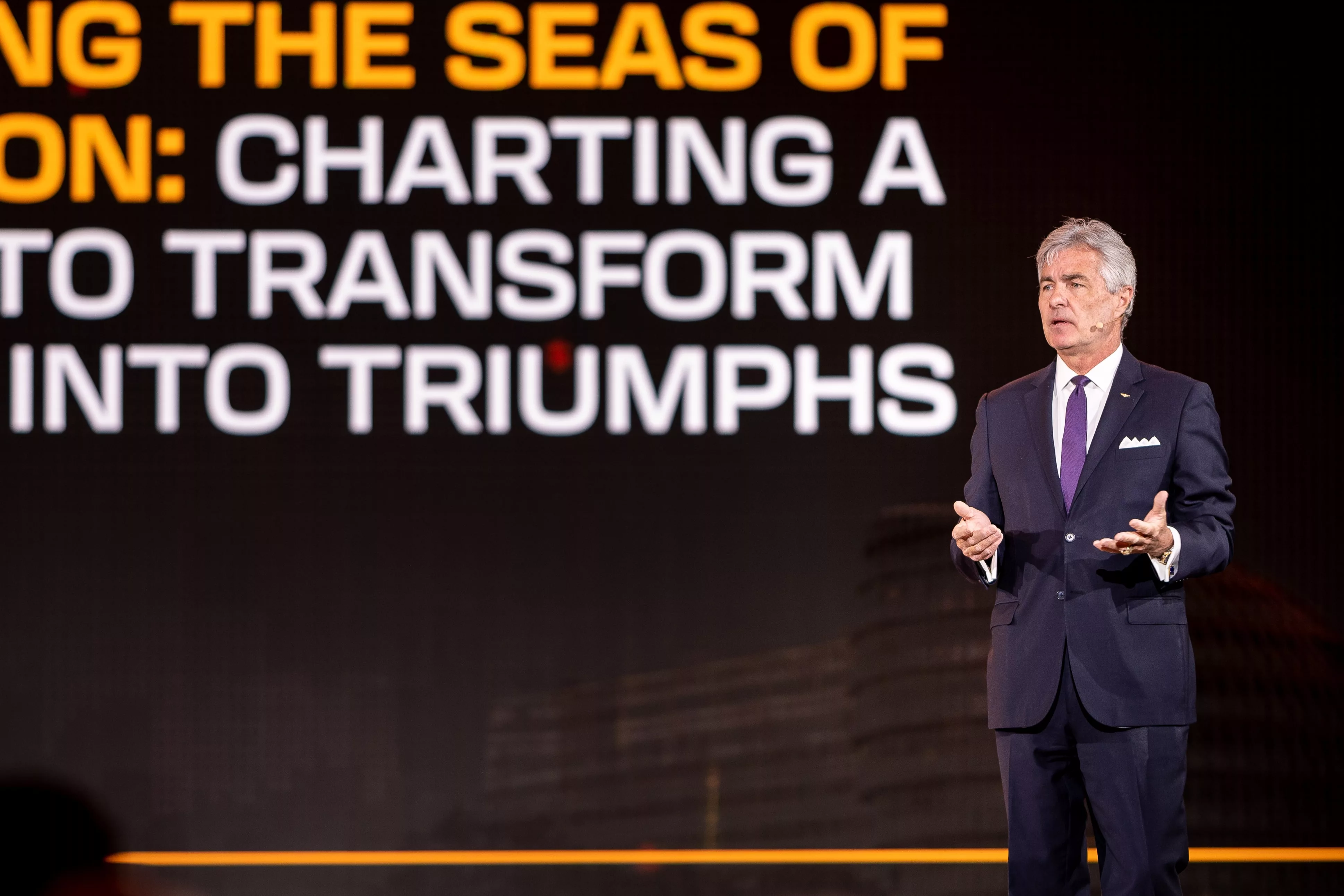|
Getting your Trinity Audio player ready...
|
If anyone knows about leadership, it’s the former Secretary of the U.S. Navy. As it happens, Kenneth Braithwaite appeared at the recent London Blockchain Conference to give a presentation on the art of leadership.
Leadership on D-Day
Braithwaite begins by recalling how his father was in the first wave of soldiers who landed on the beach on D-Day. He remembers watching Saving Private Ryan and being “transfixed” by it, calling his father after the show to find out how he had the courage to do it. His father told him it was his duty and that he didn’t want to disappoint his friends or General Roosevelt.
“Leadership is at the center of everything we do,” Braithwaite says. It’s about inspiring people to choose to do things rather than forcing them.

That said, Braithwaite notes that leadership is something we can never fully master because every organization is different, but it always starts with people. He recalls a quote from Admiral Hopper, one of the first programmers of the Harvard Mark I computer. She told him, “You manage things, and you lead people.”
Leading on an aircraft carrier
Braithwaite then recalls reporting to his first aircraft carrier. He says that by the time a Commanding Officer reaches the stage of running a vessel of this size, they’re on the way to becoming an Admiral. However, one mistake by anyone on the ship could end that aspiration.
“There’s no way any one person can govern all of those moving parts,” Braithwaite says. The Commanding Officer has to trust his people, and his CO was one of the rare few who left the bridge of the ship and got to know everyone as far as possible on a ship of 5,000. This is the essence of leadership—getting to know people and allowing them to get to know you as a person.

Leaders delegate and empower others, Braithwaite tells us. People have to be able to make decisions on behalf of the enterprise. It’s a leader’s job to inspire and empower them, but it’s also his job to take responsibility for their failures.
Looking back at such a leader, Braithwaite tells us how General Eisenhower took ownership of early failures on D-Day. He was in London and had written a letter of resignation to the U.S. President, but the tide thankfully turned, and he never had to send it. However, even in the midst of victory, and while he had been willing to accept blame for the failures, he deflected the credit to others. Real leaders take the blame and deflect credit, he says.
Nothing is more important than the ship
Sticking with a naval analogy, Braithwaite tells us that nothing is more important than the ship itself. If the enterprise fails, everyone loses their livelihood, so we all must do our job. In order of importance, it’s the enterprise, then our shipmates, and then us.
Wrapping up, Braithwaite tells us that the culture of an enterprise will play a significant role in its success or failure. He asks us to think back to the great organizations we’ve been part of, and he rightly says we’re proud to be part of them. He notes that culture isn’t always tangible, but it always starts with the leader and how they interact with others.

Braithwaite leaves us with a quote from John Quincy Adams, the 6th U.S. President, “If you can inspire people to dream more, learn more, and do more, you have achieved what it is to be a leader.”
Watch: Blockchain is already out there, you just don’t see it

 08-22-2025
08-22-2025 





